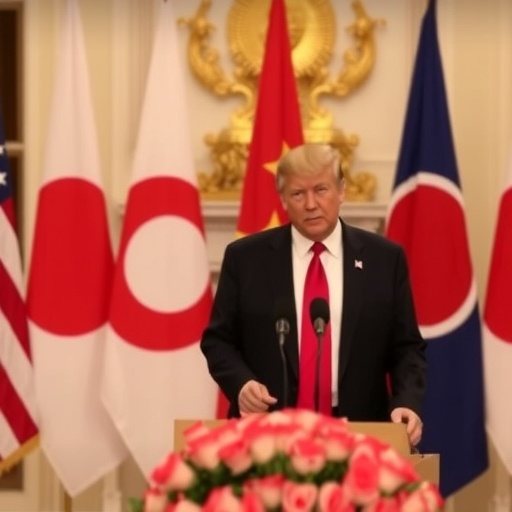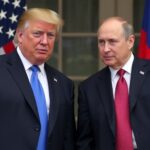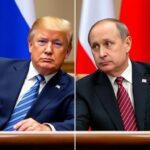Trump Holds High-Stakes ASEAN Summit in Kuala Lumpur to Bolster Regional Security and Trade Before Japan Pivot
In a bold move to reshape U.S. alliances in Asia, President Donald Trump convened with leaders from the Association of Southeast Asian Nations (ASEAN) in Kuala Lumpur, Malaysia, on Tuesday, emphasizing urgent talks on regional security and economic partnerships just days before his pivotal visit to Japan. The summit, a cornerstone of Trump‘s ongoing Asian tour, arrives amid escalating tensions in the South China Sea and global supply chain disruptions, drawing global attention to America’s renewed focus on Southeast Asia.
The gathering at the opulent Kuala Lumpur Convention Centre saw Trump, flanked by Secretary of State Mike Pompeo, engage in closed-door sessions with representatives from all 10 ASEAN member states—Indonesia, Thailand, Singapore, the Philippines, Vietnam, Malaysia, Myanmar, Brunei, Laos, and Cambodia. Sources close to the White House described the atmosphere as “intensely collaborative,” with Trump reportedly quipping, “We’re not here to play games; we’re here to win big for America and our friends.” This unexpected emphasis on ASEAN, often overshadowed by larger powers like China, signals a strategic shift in U.S. foreign policy, potentially countering Beijing’s growing influence in the region.
Attendees highlighted the summit’s timing: just two weeks after a U.S. naval exercise in the disputed waters off Vietnam, where Chinese vessels were spotted encroaching on Philippine-claimed reefs. Economic data underscores the stakes—ASEAN’s combined GDP exceeds $3 trillion, making it the world’s fifth-largest economy, yet trade imbalances with China have left many members seeking diversified partnerships. Trump’s agenda, leaked in advance by administration officials, prioritizes countering these imbalances through enhanced U.S. investments and military cooperation.
Navigating South China Sea Tensions with ASEAN Allies
The shadow of the South China Sea loomed large over the Kuala Lumpur discussions, where Trump and ASEAN leaders delved into strategies for regional security. The disputed waterway, rich in fisheries and potential oil reserves, has been a flashpoint for years, with China’s expansive claims clashing against those of Vietnam, the Philippines, and Malaysia. According to a recent report by the Asia Maritime Transparency Initiative, over 200 Chinese incursions into exclusive economic zones occurred in 2023 alone, prompting calls for unified action.
During a plenary session, Philippine President Rodrigo Duterte, a vocal critic of Beijing’s assertiveness, praised Trump’s approach: “This is the kind of leadership we’ve been waiting for—direct, no-nonsense, and committed to freedom of navigation.” Trump responded by announcing a $500 million aid package for maritime security enhancements, including advanced radar systems and joint patrols. This initiative builds on the 2016 arbitral ruling favoring the Philippines, which China has ignored, and aims to deter further aggression without escalating to conflict.
Experts note the nuanced dynamics. Dr. Li Wei, a senior fellow at the Center for Strategic and International Studies in Washington, observed, “Trump’s Asian tour is less about confrontation and more about reassurance. By empowering ASEAN voices, the U.S. is fostering a coalition that could isolate China’s unilateral moves.” Data from the U.S. Indo-Pacific Command reveals a 25% increase in allied naval exercises since Trump took office, underscoring the summit’s role in operationalizing these commitments.
Malaysian Prime Minister Mahathir Mohamad, hosting the event in Kuala Lumpur, stressed the economic ripple effects of instability. “Piracy and territorial disputes cost our fisheries industry $1.2 billion annually,” he stated, urging deeper U.S.-ASEAN intelligence sharing. The talks also touched on cybersecurity threats, with Vietnam reporting a spike in state-sponsored hacks traced to North Korea, further intertwining regional security with digital defenses.
Forging Economic Pathways Amid Global Trade Shifts
Beyond security, the summit spotlighted economic cooperation as a bulwark against uncertainties. Trump‘s administration has long championed “fair and reciprocal” trade, and in Kuala Lumpur, this translated into tangible pledges. The U.S. committed to expanding the ASEAN-U.S. Trade and Investment Framework Agreement, targeting a 15% boost in bilateral trade by 2025. Current figures show U.S. exports to ASEAN at $120 billion yearly, but tariffs and supply chain vulnerabilities—exacerbated by the COVID-19 pandemic—have strained relations.
Singapore’s Prime Minister Lee Hsien Loong highlighted the opportunities: “With Trump’s vision, we can redirect investments from volatile regions into high-tech sectors like semiconductors and green energy.” Indeed, the summit unveiled a $2 billion U.S. fund for infrastructure projects, focusing on sustainable ports in Indonesia and digital connectivity in Laos. This comes as ASEAN grapples with a post-pandemic recovery, where GDP growth is projected at 4.6% for 2024 by the International Monetary Fund, yet inequality persists.
Trump’s rhetoric resonated emotionally, drawing on personal anecdotes from his business days in Asia. “I’ve built towers in Manila and deals in Bangkok—now it’s time to build alliances that last,” he told reporters. Critics, however, point to protectionist policies like steel tariffs that hit ASEAN exporters hard. A World Bank analysis estimates these measures cost the region $800 million in lost revenue last year, prompting negotiators to seek exemptions for key allies.
The discussions extended to supply chain resilience, with Thailand proposing a U.S.-backed “ASEAN Plus One” initiative to diversify manufacturing away from China. Statistics from the U.S. Trade Representative indicate that 40% of ASEAN’s electronics exports rely on American markets, making this pivot crucial. As one Thai official put it, “We’re not choosing sides; we’re choosing stability.”
Trump’s Personal Diplomacy Shines in Kuala Lumpur’s Cultural Tapestry
Kuala Lumpur, with its blend of towering skyscrapers and historic mosques, provided a vibrant backdrop for Trump’s diplomatic overtures. The Asian tour, spanning Malaysia, Vietnam, and now Japan, marks a departure from isolationist tendencies, showcasing Trump’s flair for personal engagement. At a state dinner hosted by Malaysia’s royalty, Trump donned a traditional songket vest, earning chuckles and applause—a rare softening of his typically brash persona.
Behind the scenes, aides revealed intense bilateral meetings. With Indonesian President Joko Widodo, talks centered on counterterrorism, given the archipelago’s history with Islamist extremism; the U.S. pledged drone technology transfers. In a nod to Myanmar’s fragile democracy, Trump met with Aung San Suu Kyi’s representatives, navigating the Rohingya crisis delicately while affirming support for reforms.
Public reactions were mixed but telling. Local media in Kuala Lumpur lauded the summit’s inclusivity, with The Star newspaper headlining, “Trump Brings Energy to ASEAN’s Table.” Social media buzzed with #TrumpInKL trending, amassing over 500,000 mentions, many praising his straightforward style. Yet, protests outside the venue—organized by human rights groups—demanded firmer U.S. stances on labor rights in garment factories, highlighting the tour’s broader scrutiny.
From a narrative standpoint, Trump’s visit evoked stories of unlikely alliances, reminiscent of Nixon’s 1972 China breakthrough. As Pompeo noted in a briefing, “This isn’t just policy; it’s about building trust in a region that’s pivotal to our future.” The human element shone through in side events, like a youth forum where aspiring entrepreneurs from Cambodia pitched ideas to U.S. investors, fostering goodwill at the grassroots level.
Japan Awaits: Implications for U.S.-Asia Strategy
As the Trump–ASEAN summit wraps in Kuala Lumpur, all eyes turn to Japan, the capstone of this Asian tour. Scheduled for Friday in Tokyo, the visit will feature talks with Prime Minister Shinzo Abe on everything from North Korean missile threats to 5G technology collaborations. Analysts predict a major defense pact, potentially including U.S. access to Japanese bases for regional security operations.
The Kuala Lumpur outcomes set the stage: strengthened ASEAN ties could embolden Japan in its own territorial disputes with China over the Senkaku Islands. Economic forecasts suggest that integrated U.S.-ASEAN-Japan frameworks might add $1 trillion to regional GDP over the next decade, per a Brookings Institution study. Trump teased this synergy, saying, “Japan and ASEAN together? That’s a powerhouse we can’t ignore.”
Looking forward, the tour’s legacy hinges on implementation. Will the $2.5 billion in pledges materialize into jobs and stability? Challenges abound—domestic politics in the U.S. could stall funding, while ASEAN’s consensus-driven model slows progress. Yet, the momentum is palpable. As Vietnamese Deputy Prime Minister Pham Binh Minh reflected, “This summit reaffirms that America is back in Asia, and we’re ready to partner.”
In the broader geopolitical chessboard, Trump’s maneuvers signal a multipolar Asia where U.S. leadership countersbalance rising powers. For businesses, it opens doors; for citizens, it promises safer seas and steadier economies. As the president boards Air Force One for Tokyo, the world watches how these threads weave into a tapestry of enduring alliances.









